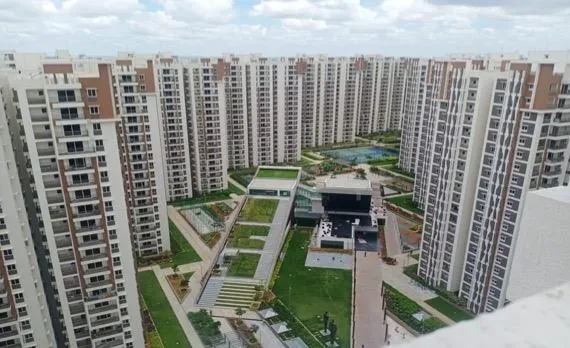 Contact us
Contact usIntent
Community
Studio Organo Concepts
About Us
Subsidaries
Studio Organo
TS RERA No.P02400003403.
TS RERA No.P02400003403.
.webp)
Is it possible for an apartment in the city to be net zero?
The density of apartments in the city, especially Hyderabad, has reached to almost 10. This means, for every acre of land, 4.3 lakh sq.ft of built up area is being constructed.
As Hyderabad FSI touches the sky, worry builds up on ground | Hyderabad News - Times of India

At such high densities, can the communities ever be net zero?
Becoming net zero is not just for green certifications. Being net zero in a true sense benefits the community in the long term and during critical times. As an example, at Organo, we are developing communities to be net zero while being water secure. This means harvesting enough water quantities through rainfall to be safe and secure even in the times of drought, reduced water availability in borewells, irregular water supply through government or all of these occurring at the same time.
Another example is waste management. No matter how responsible the community is in segregating wet/kitchen waste, it finally ends up in landfills. There is just too much waste generated in the communities (both wet and dry) to create systems within the community for composting. The final compost too has no final use within the community except for some areas such as kitchen gardens in apartments.
Taking the above example, if the number of homes/people exceed a certain number per acre, the total annual rainfall falling in Hyderabad per acre will not be sufficient to attain water security. Above this factor, there are simply too many people living on the land for water security. The rainfall is not enough.
At Organo, we are designing Rurban Lofts @ Antharam to be net zero in water, net zero in energy & net zero in wet waste. With 30 units per acre, the density is 1/3rd of what is currently in the city. Out of the 7 acres of total land area, 50% is dedicated to afforestation, fruit plantations and landscaping. This raises enough demand for the wet waste to be composted and reused.

Because of low densities, the rooftop areas would be enough to generate electricity through renewables, not just for common areas but for the entire community. With rain water harvesting below the basement, there are over 40 lakh litres capacity of rainwater harvesting tanks installed to minimise dependence on outside water sources.
With many more features within the project, Rurban Lofts is a totally new way of vertical Rurban living typology.
